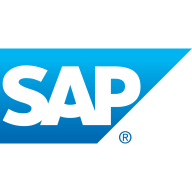

Find out in this report how the two Cloud Data Integration solutions compare in terms of features, pricing, service and support, easy of deployment, and ROI.
SAP is indeed good at all this now, with so many components such as SAP Signavio, SAP EINS, SAP Work Zone, SAP ALM, Cloud ALM, SAP public cloud, SAP private cloud, and BTP, all of which are essential to meet the latest cutting-edge technologies.
The support team is responsive and helpful.
The Salesforce team offers different levels of support.
If you keep a high priority issue, such as a production impact, they certainly come and address it in no time.
Unlike level one where they basically search for the notes and provide responses, level two and level three are much better.
MuleSoft Anypoint Platform is quite scalable, and it meets our use cases with no issues preventing implementation.
MuleSoft provides the ability to scale, yet it is costly to do so.
If I were to rate it from one to 10, I would say it has a nine to 10 for scalability.
MuleSoft is considered expensive, so pricing is a major concern.
Currently, it uses other standards, but adopting OpenAPI, the standard in the market, would be beneficial.
When dealing with multiple transactions or trading, the system can lose control, and tracking becomes hectic.
Now, they are coming up with many pricing options, which is tricky; they offer one thing for free, but charge for nine others.
The documentation is not up to the mark.
I do not know the specific costs, but given that it is part of MuleSoft, I suspect it is not cheap.
MuleSoft is considered one of the more expensive products in the market.
The platform reduces manual workload in maintaining infrastructure, but it does come with some cost considerations.
MuleSoft Anypoint Platform helps to standardize data integration approaches, making it easier to implement integration projects.
The most valuable feature is the full lifecycle management, including Anypoint Designer and Exchange, as well as Discofolio API.
The platform is integrated with Salesforce, making it preferable when using Salesforce products.
SAP is indeed good at all this now, with so many components such as SAP Signavio, SAP EINS, SAP Work Zone, SAP ALM, Cloud ALM, SAP public cloud, SAP private cloud, and BTP, all of which are essential to meet the latest cutting-edge technologies.
SAP Data Services is mainly used for extraction of data, and it works with all databases.


| Company Size | Count |
|---|---|
| Small Business | 21 |
| Midsize Enterprise | 12 |
| Large Enterprise | 29 |
| Company Size | Count |
|---|---|
| Small Business | 12 |
| Midsize Enterprise | 5 |
| Large Enterprise | 36 |
MuleSoft Anypoint Platform provides API management and integration capabilities with scalability, ensuring seamless connectivity across systems.
MuleSoft Anypoint Platform offers API management and integration capabilities within a user-friendly interface. With a range of connectors and the ability to handle integration patterns, it enables data integration across environments with support for API-led connectivity. High scalability, observability, batch processing, and tooling are key features, enhancing performance while simplifying deployment.
What are the standout features of MuleSoft Anypoint Platform?MuleSoft Anypoint Platform is employed by organizations for API management and seamless integration across systems in industries like retail and e-commerce. It connects enterprise applications in environments such as SAP and Salesforce. Users leverage it for data transformation and synchronization, achieving efficient real-time processing and a middleware layer across systems.
SAP Data Services is a top-ranking data integration and data quality tool. This is a product that aims to provide its users with effective access to their data in order to transform it and connect it to various business processes. SAP Data Services offers companies detailed data insights which improve decision-making and make company operations more effective.
Organizations can increase the value of their structured and unstructured data with the functionalities of this product regarding data integration, quality, and cleansing. Through various components such as:
the product transforms data into a ready-to-use resource for business insights.
Some of the key components of SAP Data Services include:
Through these components, the product allows its clients to access and integrate data sources and targets with native connectors. Users can derive meaning from unstructured text data, match data to reduce duplicates, and see the impact of data quality issues. The tool also offers the option to enable parallel processing, bulk data loading, and grid computing for high-volume data loads.
SAP Data Services Features
The solution has different features for data integration, data quality, data profiling, and processing of text data. Using these features, clients can manage their company's data easily and achieve excellent results by optimizing it. Some of the product’s features include:
SAP Data Services Benefits
This solution offers various benefits to its clients regarding the efficient operation of their data. The key benefits of SAP Data Services include:
Reviews from Real Users
According to Michael Lutz, senior data warehouse developer at Fox Chase Cancer Center, SAP Data Services is a powerful tool that does a lot.
An associate consultant at a consultancy says the tool is easy to use, simple to implement, and offers very good mapping capabilities.
We monitor all Cloud Data Integration reviews to prevent fraudulent reviews and keep review quality high. We do not post reviews by company employees or direct competitors. We validate each review for authenticity via cross-reference with LinkedIn, and personal follow-up with the reviewer when necessary.